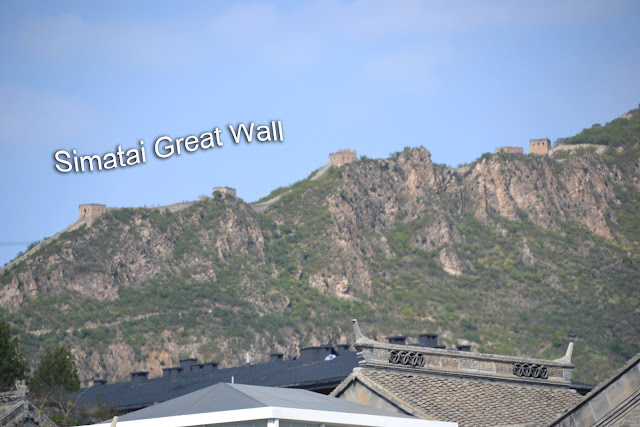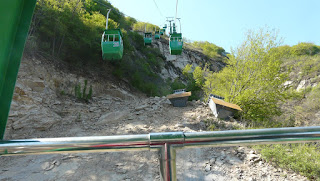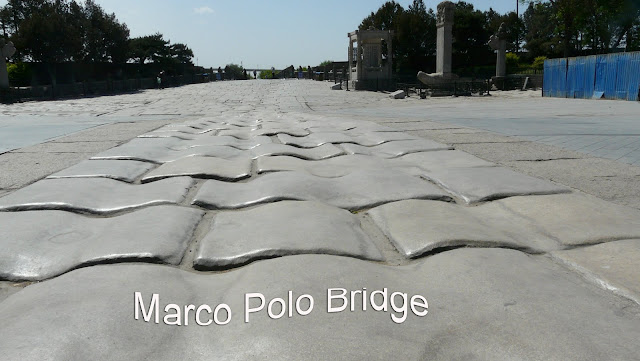Brush calligraphy is awesome! Picture the fluidity of the brush as it oiled its way across the medium leaving in its wake, a meandering stream of black ink contrasting against the garish whiteness of the background.
Never mind that you haven't the vaguest clue what they meant. (That's a mouse in the brushwork above in case you're wondering.) Works of art are intended to be more appreciated than understood.
In recent months, the transition from Tamoxifen to Arimidex (prescribed by my oncologist) brought forth a new issue. While Tamoxifen was the cause of the elevated liver enzyme, which had since been regulated, Arimidex came with arthritis. Bending my fingers are difficult and writing with a pen became an issue. A major distraction was needed. I took up brush calligraphy. This meant that some basic understanding of the art is in order.
THE BRUSH
Brushes are generally made from animal hair. Brush handles are commonly constructed from bamboo, but special brushes may have handles of sandalwood, jade, carved bone or ivory. Mine, alas! - Mine is probably plain bamboo painted brown and black
Modern brushes are primarily white goat hair, black rabbit hair, yellow weasel hair, or a combination mix. Each type of hair has a specific ink capacity, giving distinct brush strokes. Different brushes are used for different styles of calligraphy and writing.
Brushes are classified as soft, mixed or hard. Hair is laboriously sorted by softness, hardness, thickness, and length, then bundled for specific uses.
My first issue with the brush was "split" ends, for want of a better word. The brushwork from split ends are untidy and sloppy. Not knowing how this problem should be solved, I held my inkstick and glided it down the length of the hair, turning the brush at the same time until the spilt ends merged into a single pointed mass. Someday, I will find a better way.
A single strand of hair sticking out from the rest is another sign of sloppiness. Eric, a family friend told me that strands of hair sticking out should be cut instead of pulled off so as not to loosen the bunch of hair held together in the brush. That made a lot of sense.
INKSTICK
The ink-stick is an artificial ink developed during the Han dynasty. These first writing inks were based on naturally occurring minerals like graphite and vermilion.
Modern ink-sticks are generally made of soot which, after collection are mixed with glue. Higher quality ink-sticks also use powdered spices and herbs, adding to the aroma and providing some protection to the ink itself. The glue, soot, and spice mixture is then pressed into shape and allowed to dry. This process can take 6 weeks, depending on an ink-stick's dimensions.
The best ink sticks are fine grained and have a light, slightly ringing sound when tapped. They are often decorated with poems, calligraphy, or bas relief, and painted. These particular articles are highly collectable, and often acquired like stamps.
Ink from bottles are available in stores selling stationery and books but I must reiterate that nothing beats the feeling of antiquity that came from grinding an inkstick against the stone and watching or feeling the ink gain its viscosity.
Since me old fingers were all arthritic and so forth, I dropped - no! The ink-stick slipped from my fingers and glided into the pool of black ink inside the inkstone. This was bound to happen as the inkstick grew smaller from all that grinding. I let it sit in the pool of ink. In about a week, what remained of the inkstick had softened into a gooey black glob.
... which stank to high heaven! So leaving the inkstick in the pool of ink? Bad idea!
INKSTONE
The inkstick is ground in a pool of water contained inside the inkstone. As the grinding progresses, the water turned black and its viscosity increases. This is how the ink for brush calligraphy is prepared. Different shades of grey came from the different viscosity of the ink.
Ink was first prepared using a mortar and pestle, but with the advent of inksticks this method slowly vanished. The stone used is generally of a relatively fine whetstone type.
The earliest known inkstones dated back to the Han dynasty. The production of inkstones reached its zenith in the Tang and Song dynasties with inkstones becoming extremely intricate works of art.
My interest in inkstone began with a documentary I watched on the Discovery Channel. A retired Chinese military minister was interviewed after he donated his prized possession constituting rare inkstones to a certain museum.
At this point, it should be noted that in a typical archaic royal court, the ministers serving the emperor are basically grouped into two broad categories, the scholars, and the military men. In the forbidden city, for example, each category entered the palace through different doors.
Military officials are not typically known to show much interest for brush paintings which is more a scholarly pursuit so the retired minister's prized inkstones amazed me.
Having retired, and not knowing how else to occupy his time, the retired minister took up brush calligraphy and discovered a whole new world of art. He began his collection of brushes and inkstones and one day while at an antique store, he picked up a rare red inkstone for RMB200. This once belonged to a court official during the Ming Dynasty. Is that cool, or what?
XUAN PAPER
Before the age of paper, bamboo slips and silks were used as writing material. When a team from Beijing set out on a mission to measure the actual length of the Great Wall, bamboo slips (on which historical records were kept) were found along parts of the wall. The information thus derived helped historians to piece together missing parts of ancient history.
Xuan paper (which I had only recently discovered) are soft, fine-textured, moth resistant, with a high tensile strength, and remarkable longevity. It was claimed to have a reputation for lasting "1,000 years". The quality of the paper depends on the processing methods used to produce it. Paper may be unprocessed, half processed or processed. The processing determines how well ink or paint is absorbed into the fiber of the paper, as well as the stiffness of the paper itself. Unprocessed papers are very absorbent and quite malleable, whereas processed papers are far more resistant to absorption and are stiffer.
I have ordered some unprocessed Xuan paper. In time, I may be able to tell you more about it.





























































